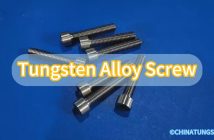In the world of nanomaterials, the tungsten disulfide nanosheet (WS? nanosheet) is gradually becoming a focal point of scientific research. This material is widely used in the energy field due to its unique physical and chemical properties. As global demand for sustainable energy continues to grow, the WS? nanosheet offers new possibilities for addressing energy challenges.

china tungsten online tungsten disulfide picture
I. Enhancing Lithium Battery Performance
The lithium battery, as the core power source for modern electronic devices and electric vehicles, directly impacts the endurance and safety of these devices. However, traditional lithium batteries still face limitations in terms of energy density, cycle life, and high - temperature stability. The emergence of the WS? nanosheet has brought new insights into optimizing lithium battery performance.
The WS? nanosheet possesses a layered structure similar to graphene, which provides a large specific surface area and abundant active sites, effectively enhancing the lithium storage capacity of electrode materials. During the charge - discharge process, lithium ions can rapidly intercalate and deintercalate between the layers of the WS? nanosheet, thereby improving the battery's energy density and charge - discharge efficiency.
Additionally, the WS? nanosheet exhibits excellent mechanical and thermal stability. During the cycling of lithium batteries, electrode materials often suffer structural damage due to volume expansion, leading to performance degradation. The rigid structure of the WS? nanosheet can effectively suppress this volume change, extending the battery's lifespan. Moreover, its high - temperature resistance ensures stable operation of lithium batteries in high - temperature environments, which is particularly important for applications such as electric vehicles.

battery picture
II. Potential Applications in Electrocatalysis and Photocatalysis
In the field of clean energy, the development of efficient catalysts is key to achieving energy conversion and environmental pollution control. The performance of the tungsten disulfide nanosheet in electrocatalysis and photocatalysis provides new directions for advancing clean energy technologies.
Hydrogen, as a clean energy carrier, is considered a crucial component of future energy systems. Currently, water electrolysis is one of the primary methods for hydrogen production, but the high cost of traditional platinum - based catalysts limits their large - scale application. The WS? nanosheet, as a non - precious metal catalyst, offers advantages such as low cost, high catalytic activity, and excellent stability. During water electrolysis, the WS? nanosheet can effectively reduce the overpotential of the hydrogen evolution reaction, improving hydrogen production efficiency. Furthermore, its layered structure and abundant edge active sites provide favorable conditions for catalytic reactions.
Photocatalytic technology, which uses solar energy to drive chemical reactions, holds broad prospects for environmental pollution control. The WS? nanosheet exhibits excellent light absorption properties and carrier separation efficiency, enabling effective utilization of sunlight for photocatalytic reactions. In the photocatalytic degradation of pollutants, the WS? nanosheet can generate electron - hole pairs by absorbing photons, which then undergo redox reactions with pollutant molecules, breaking them down into harmless substances. For example, the WS? nanosheet demonstrates high catalytic activity in the degradation of organic dyes and pesticides, offering new solutions for water treatment and environmental pollution control.
Moreover, the WS? nanosheet can be used for photocatalytic hydrogen production by splitting water to generate hydrogen. This process not only enables the conversion and storage of solar energy but also provides a new pathway for the development of clean energy.



